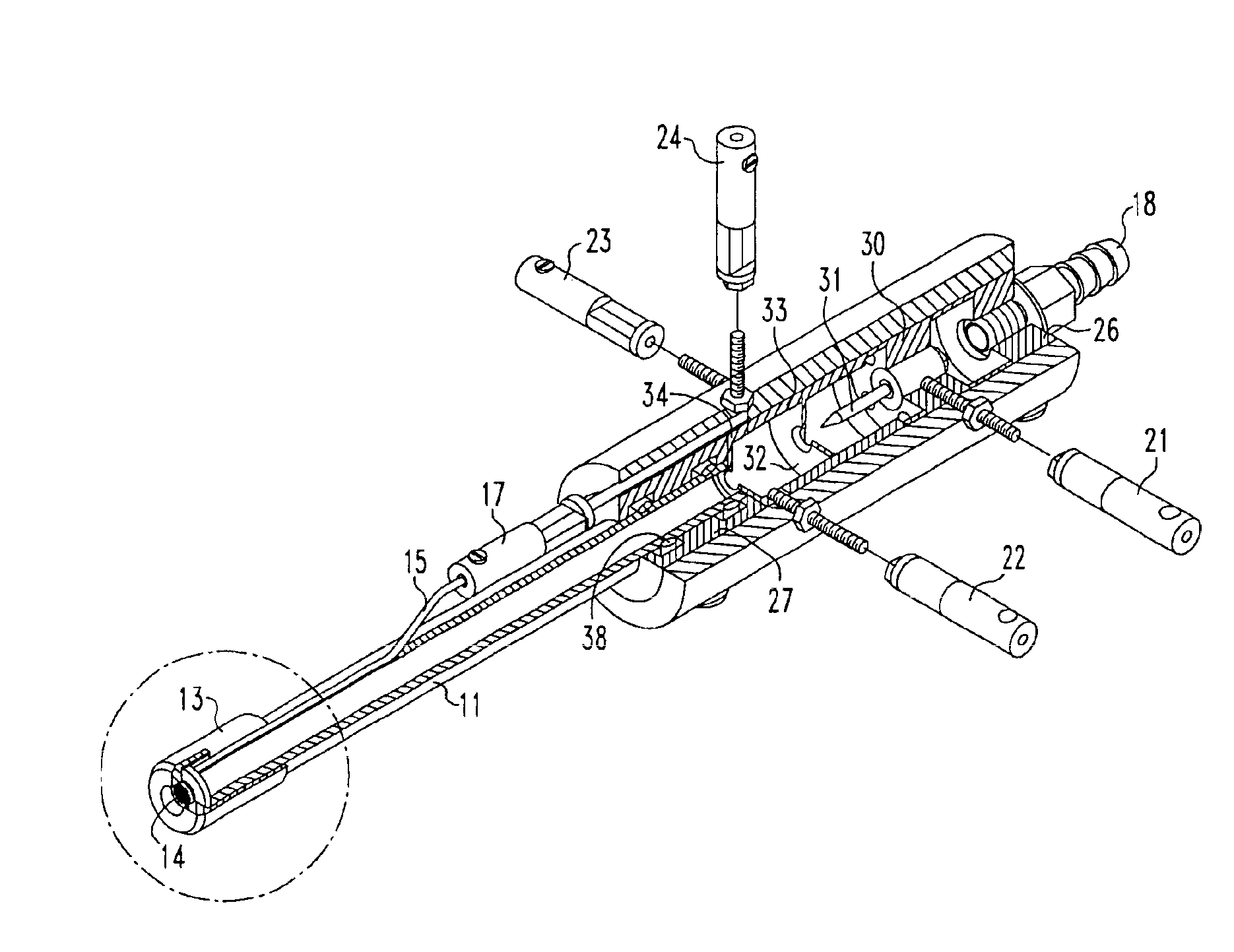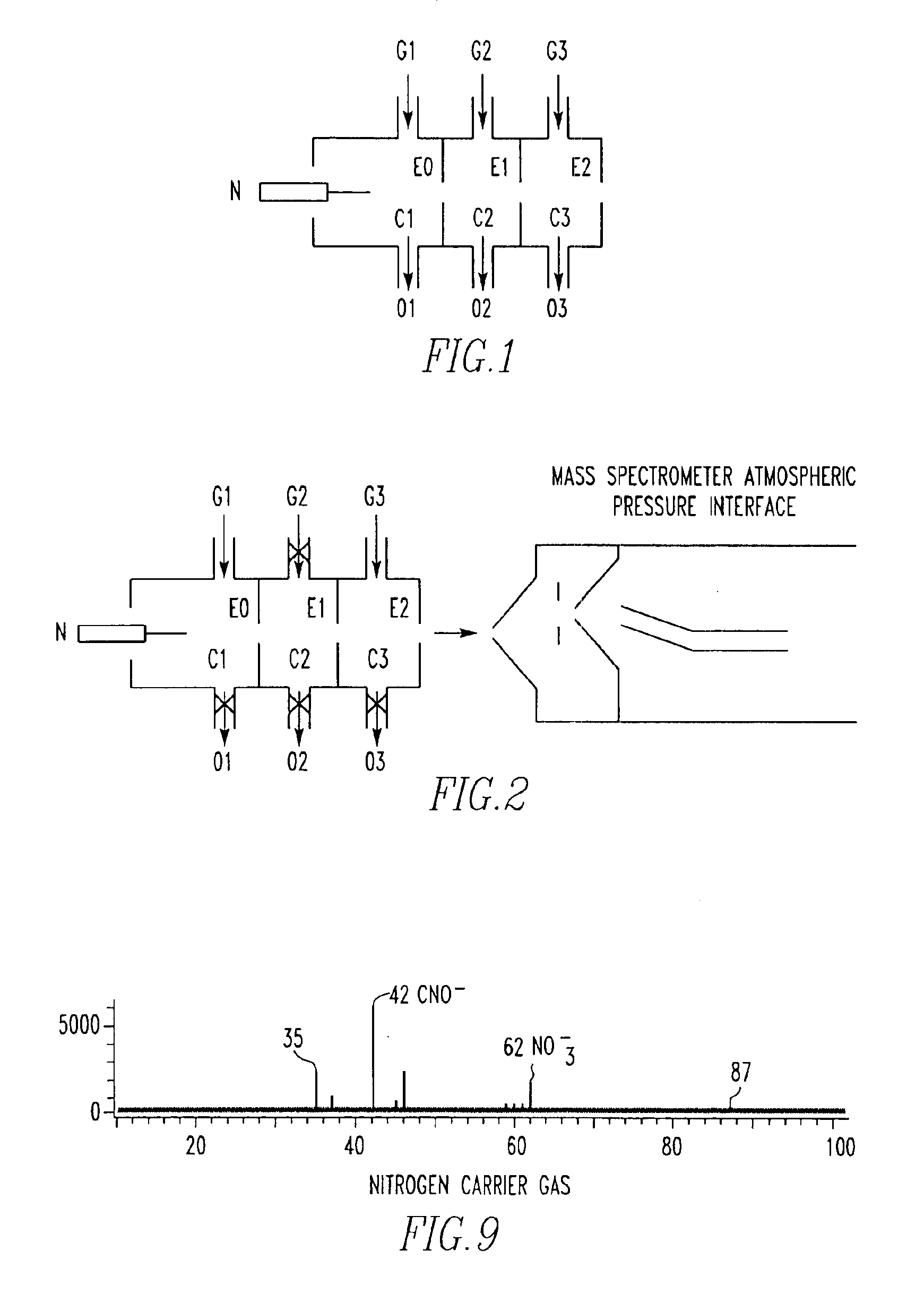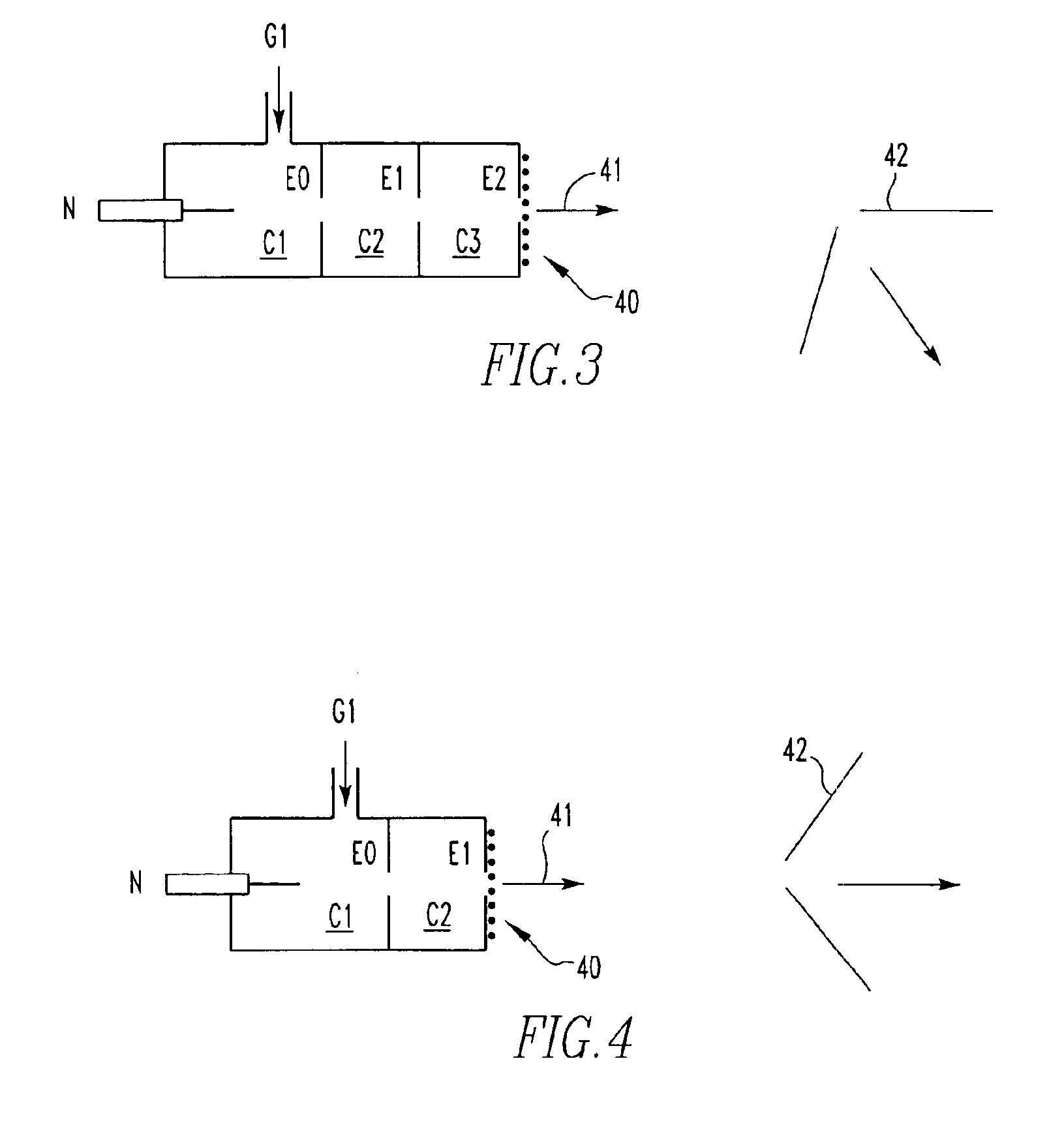Atmospheric pressure ion source
a technology of atmospheric pressure and ion source, which is applied in the direction of optical radiation measurement, separation process, instruments, etc., can solve the problems of electrode degradation, loss of analyte ions sensitivity, and difficulty in maintaining discharg
- Summary
- Abstract
- Description
- Claims
- Application Information
AI Technical Summary
Benefits of technology
Problems solved by technology
Method used
Image
Examples
Embodiment Construction
[0049]A generalized implementation of the present invention is shown schematically in FIG. 1. This device provides an electrode N, for example, a needle electrode, to which an electrical potential can be applied in a first atmospheric pressure chamber C1 into which a carrier gas can be introduced through gas inlet G1 and flow out of a gas-closeable outlet O1. The electrode N may be a point, line, plane, or curved-shape electrode. A needle electrode is an example of a point electrode, and a trim blade is an example of a line electrode. Indeed, there may be multiple needles or other electrodes of the same polarity in the first atmospheric chamber, an arrangement especially useful for chemical agent monitors. A corresponding increase in detection sensitivity is observed when multiple electrodes (N) are used. The counter-electrode E0 contains a hole through which gas and charged particles can pass. It is set to a potential (for example, ground potential) that allows a corona or glow ele...
PUM
| Property | Measurement | Unit |
|---|---|---|
| pressures | aaaaa | aaaaa |
| pressures | aaaaa | aaaaa |
| volume | aaaaa | aaaaa |
Abstract
Description
Claims
Application Information
 Login to View More
Login to View More - R&D
- Intellectual Property
- Life Sciences
- Materials
- Tech Scout
- Unparalleled Data Quality
- Higher Quality Content
- 60% Fewer Hallucinations
Browse by: Latest US Patents, China's latest patents, Technical Efficacy Thesaurus, Application Domain, Technology Topic, Popular Technical Reports.
© 2025 PatSnap. All rights reserved.Legal|Privacy policy|Modern Slavery Act Transparency Statement|Sitemap|About US| Contact US: help@patsnap.com



